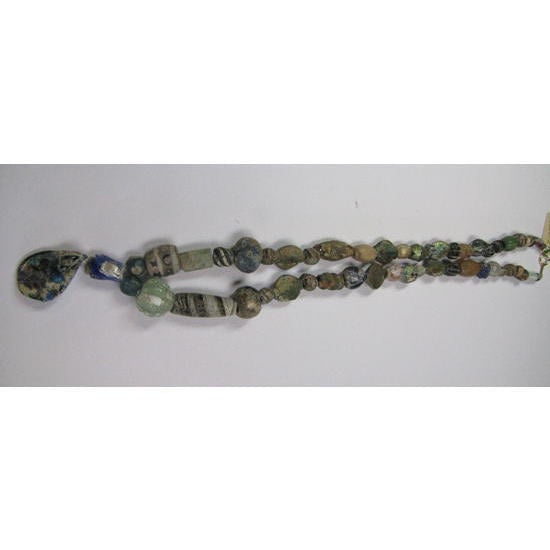MALAIKA
Ancient Roman Iridescent Glass
Ancient Roman Iridescent Glass
SKU:hn0609-304
Couldn't load pickup availability
Product Description: This strand features Roman beads dating from the 1st century BCE to the 3rd century CE, showcasing a stunning iridescence due to prolonged burial underground.
Specifications:
- Origin: Alexandria (modern-day Egypt)
-
Size:
- Length: 45cm
- Central Bead Dimensions: 18mm x 26mm x 3mm
Note: As this is an antique item, it may have scratches, cracks, or chips.
About Roman Beads:
Era: 1st century BCE to 3rd century CE
Origin: Alexandria (modern-day Egypt), coastal regions of Syria, and other areas
Roman glass craftsmanship flourished between the 1st century BCE and the 4th century CE, producing a wide range of glass products that were exported as trade goods. These glass items, crafted along the Mediterranean coast, spread across a vast region from Northern Europe to Japan. Initially, most glass was opaque, but the popularity of transparent glass grew after the 1st century CE. Beads made as jewelry were highly valued, while fragments of glassware like cups and pitchers, often drilled to create beads, are more commonly found and can be acquired at a relatively lower cost.
Iridescence:
This is a natural phenomenon where glass, buried for many years, exhibits a shimmering effect, often in silver or iridescent hues, due to the weathering process.
Share



